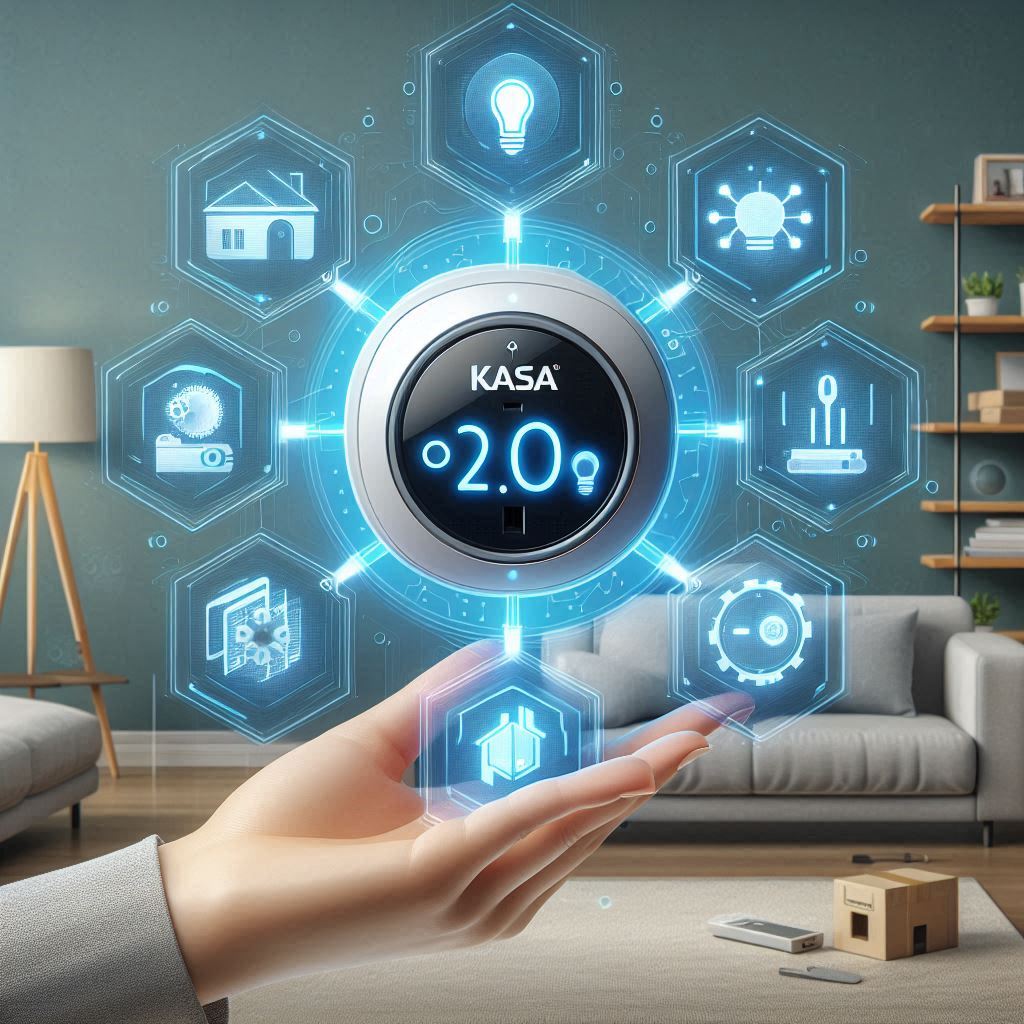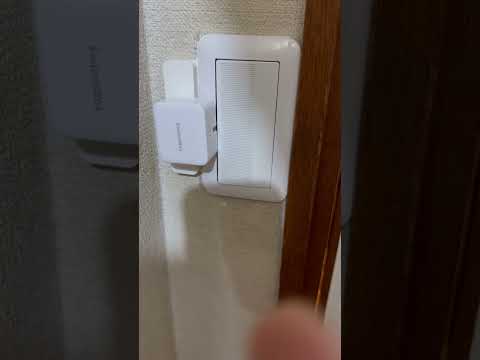Understanding HD IoT Cameras
HD IoT cameras are smart devices that connect to the internet, enabling real-time video streaming, motion detection, and remote control functionalities. These cameras are becoming increasingly popular for home security and surveillance purposes due to their ability to provide high-definition video feeds and integrate seamlessly with various smart home ecosystems.
Integrating HD IoT Cameras with Kindle Apps
Integrating HD IoT cameras with Kindle apps opens up a plethora of possibilities for enhancing home monitoring and security systems. By leveraging the Kindle app’s capabilities, users can transform their Kindle Fire tablets into versatile smart home monitors, providing a convenient and cost-effective solution for keeping an eye on their homes remotely.
Prerequisites for Development
Before diving into the development process, ensure you have a solid grasp of the Kindle Development Kit (KDK) and familiarize yourself with the development environment setup for Fire tablets. The KDK offers a comprehensive suite of tools, documentation, and sample codes to kickstart your development journey [1].
Key Steps in Development
- Familiarize with the KDK: Start by exploring the Kindle Development Kit (KDK), which includes documentation, sample code, and development guidelines tailored for Kindle devices. This toolkit is essential for creating applications that are compatible with Kindle’s ecosystem [3].
- Choose the Right Platform: Decide whether to develop your application for Kindle e-readers or Fire tablets, or both. Each platform has its unique features and capabilities, so your choice will depend on your target audience and the functionalities you wish to implement [3].
- Leverage Kindle Features: Utilize Kindle-specific features such as Whispersync for seamless synchronization across devices and personalization options to tailor the user experience. Incorporating these features can significantly enhance the usability and appeal of your application [3].
- Testing Across Devices: Ensure your application works flawlessly across different Kindle devices and screen sizes. Amazon provides virtual testing services to help developers evaluate their applications on various devices [3].Cultural activities enrich students’ extracurricular life.
- Submission and Review: Once your application is ready, submit it to the Kindle Store for review. Amazon’s rigorous review process ensures that only high-quality applications meet the standards and are available for users to download [3].
Practical Example: Creating a Basic HD IoT Camera Viewer
Here’s a simplified example of how you might start developing a basic viewer for an HD IoT camera using the KDK:
// Import necessary libraries
import com.amazon.kindle.kdk.ui.*;
public class CameraViewer extends Activity {
private ImageView imageView;
@Override
protected void onCreate(Bundle savedInstanceState) {
super.onCreate(savedInstanceState);
setContentView(R.layout.activity_camera_viewer);
// Initialize the ImageView
imageView = findViewById(R.id.imageView);
// Set up the camera feed
// Note: Actual implementation will require integrating with the HD IoT camera API
// This is a placeholder for demonstration purposes
loadCameraFeed();
}
private void loadCameraFeed() {
// Placeholder method - replace with actual implementation
// This method should fetch the camera feed and display it in the ImageView
}
}This example demonstrates the structure of a simple activity that displays a camera feed. Remember, the actual implementation will involve integrating with the HD IoT camera’s API to fetch and display the video stream.
Conclusion
Developing a Kindle app for HD IoT cameras is an exciting endeavor that combines the convenience of Kindle devices with the power of modern home security technologies. By following the steps outlined above and leveraging the resources provided by Amazon, you can create innovative solutions that enhance home monitoring and security.
Transforming Your Kindle Fire into a Smart Home Monitor
Understanding the Basics
Leveraging your Kindle Fire device as a smart home monitor through HD IoT cameras opens up a world of possibilities for enhancing your home security and convenience. By integrating these devices, you turn your Kindle Fire from a simple eBook reader into a versatile surveillance tool, all without the hefty price tag associated with dedicated security systems.
Technical Aspects: Custom Launcher Installations
To begin this transformation, the first step involves installing a custom launcher on your Kindle Fire. This process allows you to customize the device’s interface, making it more conducive to monitoring tasks. For instance, you might opt for a launcher that displays live feeds from your HD IoT cameras prominently on the home screen.
1. Go to Settings > My Device Options > System > Developer Options.
2. Enable "Install apps via USB" and "Allow installation of third-party apps".
3. Download and install your preferred custom launcher from the Amazon App Store.Browser Configurations for Enhanced Surveillance
Next, configuring your browser settings is crucial for effective surveillance. Some browsers offer features such as split-screen viewing, which allows you to monitor multiple HD IoT cameras simultaneously. Additionally, setting up bookmarks for quick access to your surveillance feeds can streamline your monitoring experience.
Example: In Silk Browser,
1. Open the browser and go to Settings.
2. Under "General", enable "Split Screen".
3. Bookmark your surveillance feed URLs for easy access.Integrating HD IoT Camera Applications
The core of turning your Kindle Fire into a smart home monitor lies in integrating HD IoT camera applications. These applications connect directly to your cameras, providing real-time video streaming and alerts. Selecting an application that supports multiple camera feeds can be particularly beneficial, allowing you to keep an eye on various areas of your home.
1. Visit the Amazon App Store and search for HD IoT camera applications.
2. Choose an app that suits your needs, considering factors like supported camera models and additional features.
3. Follow the app's instructions to connect your HD IoT cameras.Practical Examples and Significance
Imagine coming home to find your front door slightly open—a situation that could potentially lead to a break-in. With your Kindle Fire acting as a smart home monitor, you receive an alert on your phone, thanks to the integrated HD IoT camera system. This real-time notification gives you peace of mind, knowing that your home is being watched over, even when you’re away.
This practical application underscores the significant impact of leveraging technology to enhance home security and convenience. By repurposing your Kindle Fire, you create a cost-effective solution that rivals traditional security systems in functionality and effectiveness.
In conclusion, transforming your Kindle Fire into a smart home monitor through HD IoT camera integration is not only feasible but also highly beneficial. By understanding the technical aspects, including custom launcher installations, browser configurations, and the integration of HD IoT camera applications, you unlock a new level of home security and convenience.
Transforming Your Kindle Fire into a Smart Home Monitor
To turn your Kindle Fire tablet into a versatile smart home monitor, you’ll need to embark on a series of setup steps. These steps are designed to equip your device with the capabilities of a surveillance system, leveraging its existing hardware and software features. Let’s break down the process into manageable parts, starting with the foundational requirements.
Installing the Google Play Store
The first hurdle to overcome is the absence of the Google Play Store on Kindle Fire devices. This store houses the apps we’ll need for our smart home monitoring project. To install the Google Play Store, follow these steps:
- Enable Developer Options: Go to Settings > About Tablet > tap Build Number seven times to enable Developer Options.
- Access Developer Options: Return to Settings, find Developer Options, and enable USB Debugging.
- Install Google Play Store: Download and install the APK from a trusted source. After installation, sign in with your Google account.
Setting Up a Custom Launcher
With the Google Play Store installed, you can now download and set up a custom launcher. A custom launcher will allow you to customize the home screen and app drawer, making it easier to navigate through your surveillance apps.
- Download a Custom Launcher: Search for “custom launcher” in the Google Play Store and select one that suits your needs.
- Install and Set Up: Follow the installation instructions provided by the launcher developer. Customize the settings according to your preferences.
Configuring Kiosk Mode
Kiosk mode allows your Kindle Fire to run a single application full-screen, perfect for a dedicated surveillance setup. Here’s how to configure it:
- Download a Kiosk Browser App: Use the Google Play Store to find a kiosk browser app compatible with your device.
- Set Up Kiosk Mode: Open the app and configure it to launch automatically upon startup. This ensures your device remains dedicated to displaying the surveillance feed.
Additional Tips
- Battery Life: Consider the battery life of your Kindle Fire when operating in kiosk mode. Running video feeds can drain the battery quickly.
- Security: Ensure all apps and services are up-to-date to protect against vulnerabilities.
- Storage: Allocate enough storage space for the apps and videos you plan to use.
By following these steps, you’ve successfully transformed your Kindle Fire into a smart home monitor. This setup offers a cost-effective solution for keeping an eye on your home, leveraging the device’s existing capabilities without breaking the bank.
This guide provides a solid foundation for integrating your Kindle Fire into your smart home ecosystem. As technology evolves, keep an eye out for updates and new apps that could enhance your surveillance experience further.
Enhancing Your Kindle Fire Experience: Installing Google Play Services
Unlocking the comprehensive capabilities of your Kindle Fire requires a bit more than just enjoying its native features. By installing Google Play Services and the Google Play Store, you open up a world of additional apps and services, expanding far beyond the offerings of Amazon’s ecosystem alone. This guide will walk you through the essential steps to achieve this enhancement, ensuring a seamless integration process.
Why Install Google Play Services?
Firstly, it’s crucial to understand why integrating Google Play Services into your Kindle Fire is beneficial. The primary advantage lies in the vast array of apps and services now accessible to you. From productivity tools to entertainment platforms, the Google Play Store offers a plethora of options that might not be available within Amazon’s app store. This diversity enhances your device’s utility, making it a more versatile tool for both work and leisure.
Step-by-Step Guide to Installation
Preparing Your Device
Before diving into the installation process, ensure your Kindle Fire is charged sufficiently and backed up. This precautionary measure protects your data in case anything goes awry during the installation.
Downloading APK Files
- Visit Trusted Sources: Navigate to reputable websites such as APKMirror. These sites offer reliable APK (Android Package Kit) files compatible with your device’s Fire OS version.
- Select Compatible APKs: Look for versions of Google Play Services and the Google Play Store that match your Kindle Fire’s operating system. Compatibility ensures smooth functionality without compromising security or stability.
Installing APK Files
- Enable Unknown Sources: Go to Settings > Security & Privacy > Enable “Install Apps via USB” or a similar option depending on your device. This step allows you to install third-party APKs.
- Transfer and Install: Use a USB cable to connect your Kindle Fire to your computer. Transfer the downloaded APK files to your device’s storage. Open each APK file directly on your Kindle Fire to initiate the installation process.
Post-Installation Tips
After successfully installing Google Play Services and the Google Play Store, take some time to explore the new apps and services available to you. It’s also wise to keep your device’s software up-to-date to maintain optimal performance and security.
Conclusion
By following these steps, you’ve significantly expanded the capabilities of your Kindle Fire, blending the best of Amazon’s ecosystem with the versatility of Google’s services. This integration not only enriches your device’s functionality but also enhances your overall experience, making your Kindle Fire a more powerful tool for everyday use.
This revised section provides a detailed, step-by-step guide on how to enhance your Kindle Fire by installing Google Play Services and the Google Play Store. It emphasizes the benefits of doing so, offering practical advice and tips to ensure a smooth transition.
Enhancing Your Smart Home Monitoring with Kindle Fire
Customizing Your Kindle Fire for Surveillance
To transform your Kindle Fire into a powerful surveillance tool within your smart home ecosystem, leveraging apps like Nova Launcher and Fully Kiosk Browser & App Lockdown is essential. These applications offer a dual benefit: they streamline your device’s interface, making it more efficient for monitoring tasks, and secure it from unintended app usage.
Streamlining the Interface
By installing Nova Launcher, you gain the ability to customize your Kindle Fire’s layout to focus exclusively on the surveillance app. This means hiding all non-essential apps, ensuring that every glance at the screen delivers valuable surveillance footage without distraction. The customization extends beyond app visibility; you can also adjust settings like screen brightness to optimize viewing conditions, whether day or night.
Securing Your Device
Fully Kiosk Browser & App Lockdown serves as a security measure, locking down your device to run only one application at a time. This feature is particularly useful in preventing unauthorized access or accidental navigation away from the surveillance app. It ensures that your Kindle Fire remains dedicated to its primary function—monitoring your smart home environment.
Automating for Efficiency
Beyond manual adjustments, both apps support automation features that further enhance your monitoring capabilities. For instance, setting up the device to automatically wake upon motion detection can significantly improve response times during critical moments. This automation reduces the need for constant manual checks, allowing you to focus on other aspects of your smart home management.
Conclusion
By customizing your Kindle Fire with Nova Launcher and Fully Kiosk Browser & App Lockdown, you create a dedicated, efficient, and secure surveillance system. This setup not only streamlines your monitoring process but also integrates seamlessly into your existing smart home infrastructure, offering peace of mind through enhanced vigilance.
Integrating HD IoT Cameras with Your Kindle Fire
Understanding HD IoT Cameras
HD IoT (Internet of Things) cameras are smart devices designed to capture high-definition video footage and transmit it over the internet. These cameras are equipped with sensors and connectivity features that allow them to interact with various smart home systems and applications. They play a crucial role in enhancing home security, providing real-time monitoring, and enabling remote access to live feeds from anywhere in the world.
Why Choose Kindle Fire for HD IoT Integration?
Kindle Fire tablets offer a unique platform for integrating HD IoT cameras due to their robust hardware capabilities and the vast ecosystem of compatible apps available on Amazon’s app store. The Kindle Fire’s processing power ensures smooth streaming of high-definition video, while its compatibility with popular IoT platforms makes it easy to connect with a wide range of HD IoT cameras.
Step-by-Step Guide to Connecting HD IoT Cameras to Kindle Fire
- Selecting the Right Camera: Start by choosing an HD IoT camera that supports Wi-Fi connectivity and is compatible with the Kindle Fire. Look for models that offer high-resolution video quality and additional features such as motion detection and night vision.
- Setting Up the Camera: Follow the manufacturer’s instructions to set up your HD IoT camera. This typically involves charging the camera, connecting it to your home Wi-Fi network, and configuring any settings such as motion sensitivity and recording quality.
- Downloading the HDIOTCamera App: Visit the Amazon App Store on your Kindle Fire and download the HDIOTCamera app. This app serves as the bridge between your Kindle Fire and the HD IoT camera, allowing you to view live feeds and control camera settings remotely.
- Connecting the Camera to the App: Open the HDIOTCamera app on your Kindle Fire and navigate to the “Add New Device” option. Enter the camera’s IP address or scan the QR code provided by the manufacturer to establish a connection. Once connected, you’ll be able to view the live feed directly on your tablet.
- Exploring Additional Features: After setting up the basic connection, explore the app’s features such as two-way audio, motion alerts, and cloud storage options. Customize these settings according to your needs to enhance your home security and monitoring experience.
Conclusion
Integrating an HD IoT camera with your Kindle Fire offers a convenient and effective solution for home security and surveillance. By following the steps outlined above, you can easily connect your device to a network camera and enjoy the benefits of high-definition video streaming and remote access. Whether you’re looking to monitor your home while away or keep an eye on your children, the combination of Kindle Fire and HD IoT cameras provides a versatile and powerful tool for modern homeowners.
Choosing the Perfect Camera for Your Kindle App
When it comes to enhancing your home security or keeping an eye on your pets while away, selecting the right camera is crucial. This section delves into the key features to consider when choosing a camera compatible with the Kindle App, focusing on models that prioritize local storage and seamless integration with your device.
Importance of Local Storage
Local storage is a game-changer in home surveillance. It ensures that your video footage is stored directly on the camera itself, rather than relying on cloud services. This approach offers several advantages:
- Reliability: With local storage, you don’t have to worry about internet connectivity issues or service disruptions affecting your ability to monitor your space.
- Privacy: Storing data locally keeps your recordings private and reduces the risk of unauthorized access to sensitive moments captured by your camera.
- Cost-Effectiveness: Over time, managing your own storage can be more economical, especially if you already have a compatible device like the Kindle Fire for viewing.
Ensuring Kindle Fire Compatibility
Compatibility with the Kindle Fire is another essential consideration. Not all cameras will work seamlessly with your device out of the box. Here’s what to look for:
- Direct Integration: Some cameras come with apps specifically designed for easy setup and control via the Kindle Fire. These are ideal for users looking for a plug-and-play experience.
- Software Requirements: In cases where direct integration isn’t available, check if the camera requires any additional software installation on your Kindle Fire. Ensure that the software is reliable and well-supported.
Practical Tips for Selection
To navigate the vast array of options available, consider the following tips:
- Read Reviews: Look for cameras with positive reviews from other Kindle Fire users. Pay attention to comments regarding ease of use, compatibility, and overall performance.
- Check Specifications: Before making a purchase, compare the specifications of different models. Focus on aspects such as resolution, field of view, and night vision capabilities.
- Consider Future Needs: Think about how your needs might change over time. A camera with expandable storage or the option to add additional sensors could prove more versatile in the long run.
By prioritizing local storage and ensuring compatibility with your Kindle Fire, you can enhance your home security or pet monitoring setup effectively. Remember, the right camera can serve as a reliable and cost-effective solution for keeping an eye on what matters most to you.
Getting Started with HDIOTCamera: A Comprehensive Guide
Understanding HDIOTCamera
HDIOTCamera stands out among network camera applications due to its simplicity and comprehensive feature set. It allows users to seamlessly connect and manage their cameras directly from their smartphones or tablets. With HDIOTCamera, you can enjoy real-time video feeds, schedule recordings, receive timely alerts, and even snap photos or record videos. This guide will walk you through setting up HDIOTCamera, ensuring a hassle-free experience.
Installation Process
To begin, download the HDIOTCamera app from the Google Play Store or Apple App Store. Ensure your device meets the minimum requirements specified in the app description. Once downloaded, open the app and agree to the terms and conditions. The next step involves linking your camera to the app. This process typically requires entering the camera’s IP address, which can be found in the camera’s manual or settings menu.
Configuring Your Camera
After linking your camera, the app will prompt you to configure various settings. Here, you can adjust the resolution, frame rate, and other parameters to optimize performance based on your internet speed and desired quality. It’s also crucial to set up motion detection and alert preferences to ensure you never miss important events.
Advanced Features
Beyond basic functionality, HDIOTCamera offers advanced features designed to enhance your surveillance experience. For instance, you can create activity zones within the camera’s field of view to focus alerts on specific areas. Additionally, the app supports two-way audio, allowing you to communicate with visitors or deter intruders directly through your device.
Security Considerations
Security is paramount when dealing with networked devices. HDIOTCamera encrypts all data transmissions between your device and the camera, providing a secure connection. However, it’s essential to change the default password on your camera and regularly update both the camera firmware and the app to protect against vulnerabilities.
Troubleshooting Common Issues
Should you encounter any problems during setup or use, refer to the HDIOTCamera support page or community forums for solutions. Common issues include connectivity problems, poor video quality, and notification delays, which can often be resolved by checking your Wi-Fi signal strength, adjusting camera settings, or updating software.
Conclusion
HDIOTCamera represents a powerful tool for anyone looking to enhance their home or business security with minimal effort. By following the steps outlined in this guide, you can easily install and configure your camera, taking full advantage of its capabilities to keep an eye on what matters most. Remember, staying informed and proactive about your security measures is key to safeguarding your premises effectively.
Transforming Your Kindle Fire into a Smart Home Hub
Understanding the Kindle Fire’s Potential
The Kindle Fire, initially designed as a versatile e-reader, has evolved into a multifunctional device capable of supporting a wide range of applications beyond book reading. One such application is its ability to serve as a hub for your smart home devices, including HD IoT cameras. By leveraging the Kindle Fire’s flexibility and connectivity features, you can create a centralized control system for your smart home, enhancing security and convenience.
Integrating HD IoT Cameras with Kindle Fire
Integrating HD IoT cameras with your Kindle Fire involves a few simple steps. First, download the appropriate app from the Amazon App Store, which will act as the bridge between your camera and the Kindle Fire. Once installed, open the app and follow the on-screen instructions to connect your camera to the Kindle Fire. This process typically includes scanning a QR code displayed on the camera’s setup screen or entering a serial number manually.
Example Steps:
1. Download the "Smart Home Camera" app from the Amazon App Store.
2. Open the app and select "Add New Device."
3. Follow the prompts to scan the QR code on your HD IoT camera.
4. Complete the setup process by naming your camera and selecting its location within your smart home network.Enhancing Your Smart Home Ecosystem
With your HD IoT camera now integrated into your Kindle Fire, you’ve taken a significant step towards building a comprehensive smart home ecosystem. This integration allows you to monitor your home remotely, receive alerts for motion detection or sound, and even communicate with visitors through two-way audio. The versatility of the Kindle Fire as a smart home hub means you can add more devices and services over time, customizing your setup to fit your lifestyle and needs.
Staying Ahead with Technology
As technology advances, so do the capabilities of devices like the Kindle Fire. Keep an eye out for updates to existing apps and the release of new ones that offer enhanced features or compatibility with additional smart home devices. Engaging with online communities and forums can also provide insights into innovative uses for your Kindle Fire and tips for optimizing its performance in your smart home setup.
In summary, transforming your Kindle Fire into a smart home hub offers a cost-effective and convenient way to manage your HD IoT cameras and other smart devices. By staying informed about the latest developments and exploring new integrations, you can ensure your smart home remains at the forefront of technological advancement.














